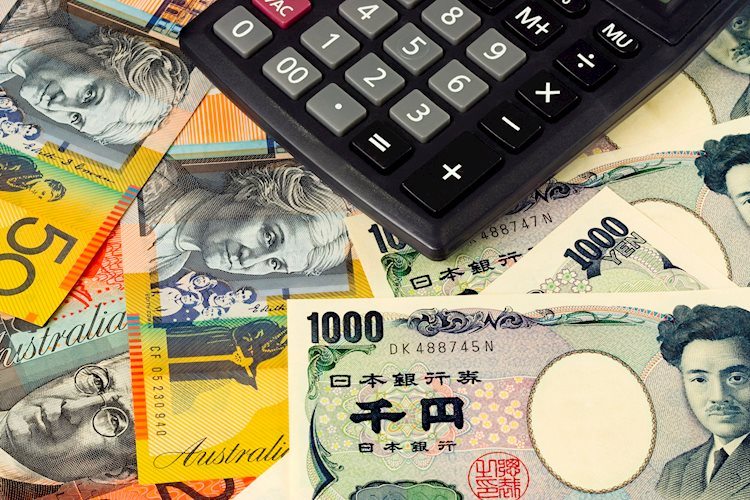AUD/JPY is showing a downward trend after the hawkish speech by the Bank of Japan Governor Ueda, causing the Japanese Yen to gain ground against the Australian Dollar. BoJ Governor Ueda mentioned that the central bank could potentially raise interest rates further if their economic projections prove to be accurate. Recent inflation data in Japan contributed to the BoJ’s hawkish stance, with the National CPI showing a rise in July. Despite the weakening of the AUD/JPY cross, the downside may be limited as the Australian Dollar could receive support from the Reserve Bank of Australia (RBA) and rising market optimism following a dovish speech by the US Federal Reserve Chairman Jerome Powell.
During European trading hours on Monday, AUD/JPY experienced a halt in its three-day winning streak, with the pair hovering around 97.50. The hawkish remarks made by BoJ Governor Ueda in Parliament had a significant impact on the currency pair, leading to a shift in favor of the Japanese Yen. Ueda’s statement about the potential for further interest rate hikes based on accurate economic projections added to the hawkish sentiment surrounding the BoJ’s policy outlook. Japan’s recent inflation data showing a rise in the Consumer Price Index further reinforced the BoJ’s approach.
While the AUD/JPY cross is currently on a downward trajectory, the downside may be limited due to certain factors supporting the Australian Dollar. The currency received a boost from the dovish speech delivered by US Federal Reserve Chairman Jerome Powell at the Jackson Hole Symposium, contributing to rising market optimism. Additionally, the RBA’s stance on its policy outlook has been perceived as hawkish, with indications from the recent RBA Minutes suggesting that a rate cut is unlikely in the near future. RBA Governor Michele Bullock also emphasized the willingness of the central bank to raise rates to combat inflation if necessary, providing further support for the Aussie Dollar.
The Australian Dollar showed weakness against major currencies, particularly the Japanese Yen, as depicted in the table displaying the percentage change of the AUD against various listed currencies. This data highlights the impact of recent market developments on the value of the Australian Dollar compared to other major currencies. The heat map provided illustrates the percentage changes of major currencies against each other, with the base currency selected from the left column and the quote currency from the top row. By analyzing this data, investors can gain insights into the current performance of the Australian Dollar in the foreign exchange market.
In conclusion, the AUD/JPY pair is currently experiencing a downward trend following the hawkish speech by the Bank of Japan Governor Ueda. Despite this decline, the downside may be limited as the Australian Dollar could benefit from the hawkish sentiment surrounding the RBA’s policy outlook and rising market optimism. Investors should continue to monitor developments in both the Australian and Japanese economies, as well as global market conditions, to make informed trading decisions. The currency market is constantly influenced by a variety of factors, and staying informed is crucial for successful trading in the forex market.


























